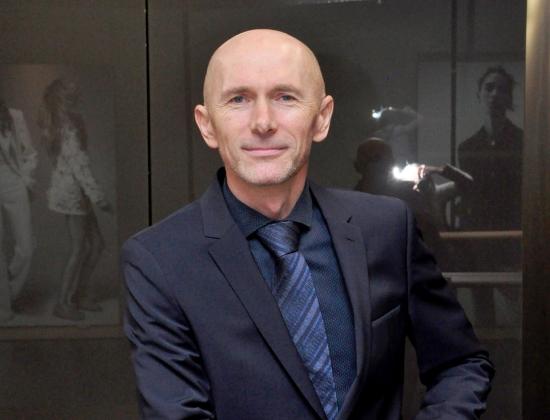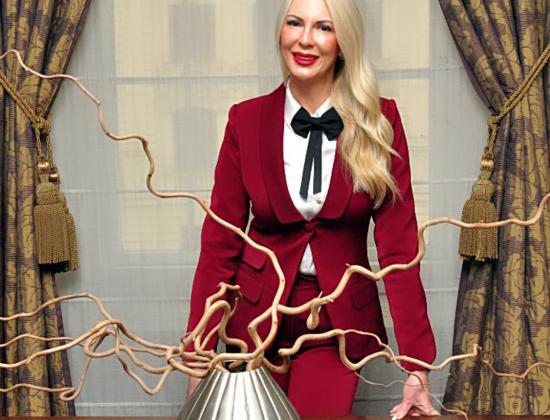JOHN LODDER: What is your management style? How are you going to improve your business?

The current economic situation is tough for everybody and I hear a lot of people complaining about it. It is understandable on one hand because the economic situation affects us all.
But why do I hear managers complain? Complaining is actually looking backward, not looking forward; complaining is all about focusing on problems instead of focussing on solutions.
From people who are responsible for the way their company is performing, I expect they take the lead and come with a vision: how can we find solutions, how can we find new and successful ways for our company to become or to stay successful.
I believe many managers need to change their style because ‘the old times’ are not returning. We have to be creative to change our management style and make us fit for the present and future.
It requires some honesty though! Am I prepared to think a few minutes honestly about the question: ‘What is my management style?’
In a classic typology we see three different management styles that could help us, these are the:
- Laissez-Faire style
- Total control style
- Participative style
In the ‘Laissez-Fair’ style we see the manager who takes no decisions and says ‘we have good staff, let them take care of everything’. Until something goes wrong. Then this manager will look for someone to blame, and (s)he will always find someone to blame. This management style creates a blaming culture in the organisation which results in having big problems in the present situation. People are scared for their management (maybe even for their colleagues) and the effect is that openness, creativity and innovation is impossible to be fruitful in this company culture.
In the ‘Total Control’ style we see the micro-manager who needs to control everything that happens and that might possibly happen in his organisation. This manager makes sure that there are handbooks filled with rules, procedures and regulations for every situation that he can imagine. What happens in such a bureaucratic culture? Employees will not think during working hours (!), they just follow the rules and procedures. Then, if something new comes up, if something changes, they do not know what to do because they have no rule for this new event. So a new procedure is written and added to the manual.
It might be clear that this management style does not work either in these turbulent times.
In the ‘Participative’ style we see the confident and flexible manager who understands that his greatest assets are the organisations’ employees and customers. This manager looks both at internal and external stakeholders because (s)he knows that they have the real knowledge and experience which is needed and that the manager cannot possibly have. This manager creates an open atmosphere, challenges the employees to be creative and to come forward with their ideas. They have regular meetings in which they have dialogues to co-create new approaches to the market, where they exchange about how to improve existing services and products etc.
What is your management style?
If you look at these three types of management which one comes closest to your everyday behaviour as a manager? Are you satisfied with your style? Are your employees satisfied and inspired with your style? Does your staff walk into your office spontaneously to provide you with great new ideas regularly?
If you recognise yourself mostly in the ‘participative style’ I think you find it easy to meet the challenges of today’s market developments. You created an open communication culture in your organisation where people trust each other and cooperate together. Based on these internal strengths your staff is focussed on opportunities and they work proactively to co-create and to improve the satisfaction of your customers. In this culture your staff will be creative and come with bright ideas for improvement.
If you are closer to the two other styles, I provide you with a few tips and suggestions below that you can try out and experience how you like them.
But first a few words about changing your management style.
Changing your management style
For a manager it is often difficult to change his or her behaviour, and yes, indeed it takes some courage to change your management style.
But think about it, if something is frustrating you, this will continue to frustrate you, until you do something different, something that will change the cause of your frustration.
Often there are so called ‘irrational fears’ that prevents someone from changing his behaviour. It could be caused by things like position, status, uncertainty, not daring to experiment with another behavioural component, what ‘they’ will think about me and so on.
This is non-rational because the main assignment in life is ‘life-long learning’, and learning is always a process of experimenting, try-and-try again. The important thing is to ask yourself: ‘Do I really feel that I want to change something?’ It is all about authenticity. If you change from within, you show others your authentic passion to change the current situation that frustrates you (and without a doubt, a lot of other people around you). They see and experience the same or similar as you do, but usually they will not tell you. And most of them will applaud your action, probably not aloud, but they will recognise your authenticity.
The other side of the medal is that if you continue behaving in the same way, you are telling others with your actions that the current situation is OK, regardless of any verbal comments or objections you make.
What is your reaction to this?
Do you think you have to give up who you are and become someone else? This is certainly not true.
Change one of your behaviors and watch and enjoy the change in others
‘Water always goes top-down’ which is a metaphor for management behavior. Your behavioral change will change the momentum of others’ actions, their impact, and their way of thinking and acting. Actions from within you have much more impact than words. Words do not impact everyone.
Actions do.
When words and actions align, the impact is tremendous. This does not mean leveling and carrying out threats against others. It means that if you want something to change and you do nothing different yourself, little or nothing will change.
- Coach others to see the impact of their actions by the actions you take from within yourself. There are many people that become aware of their impact on others only when they see the outcome. They are either not intuitive, focus only on the present moment, or have developed a detachment from others for various reasons. They connect into effects and outcomes only when those effects are visible.
- Assess, think, and then act. Assessing the situation and thinking of options are valuable first steps. They lose their value when you don’t act on them. Too much analysis causes paralysis and tells others that the current situation is acceptable to you. Even if after considering the options you decide no action is needed, at least change your personal reaction. If it is not important, let go of the frustration and go further to more important matters. If the frustration persists, get active again to change it.
- Think of the risk of not changing. Perhaps the toughest aspect of taking a different action is the comfort of the known. But you are the leader, the entrepreneur, the responsible decision maker. That is your job. It helps you a lot to talk and exchange with your staff. Ask for their opinions, they know much more than you think and often they even know more than you because they know what’s going on: what their colleagues think, what your customers think. Use that knowledge and experience! Then take well founded steps to create the actions toward the future knowing that you have the full support of your employees.
Create the cooperation basis
There are aspects of coaching that must be properly set between the leader and his people, to create a basis for an open relationship and effective communication like:
- Establishing mutual trust and respect
- Creating a safe environment for open discussion
- Facilitating the dialogue
- Active listening
- Challenging the individual with tough questions to encourage reflection
- Explicitly invite your people to speak up
The most important area to establish is mutual trust and respect for one another. Both must be earned and cannot be demanded or expected. They are always a result of your behaviour.
Your next step is to work with your people and stimulate their creativity with questions like:
- What makes us better and different from our competition?
- How can we make customers understand and appreciate the value we bring?
- Where can our current talent and potential take us?
- What is our execution plan?
The process of improving strategy and optimizing talent begins by building a team that can guide you through the current challenges into the future of your organisation.
I would enjoy your feedback which you can write in the comment box below.
JohnLodder M.A., MSc.
If you would appreciate more information please contact me at:



























